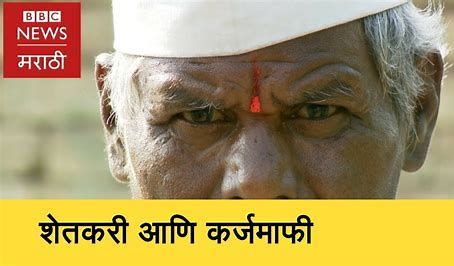Policy watch
How good is Maharashtra’s land management?
RN Bhaskar
This is the first part of a two-part analysis of Maharashtra and Sugarcane. The first part can be found at https://asiaconverge.com/2023/03/maharashtra-has-a-fatal-obsession-for-sugarcane/
Before one attempts to provide an answer to the question in the title, it is necessary to explain the caveats. This article looks at land management only for the three largest sugarcane producing states – Uttar Pradesh, Maharashtra and Karnataka.
Second, the analysis is more focussed on agricultural land management, even though there are many aspects of urban land management too which show worrying signs of plain disdain. Consider the manner in which it took Non-Agricultural Land Tax from its urban dwellers in violation of laws (https://asiaconverge.com/2022/01/new-unfair-and-controversial-real-estate-tax-laws-in-maharashtra/). The state stayed application of such laws (https://m.timesofindia.com/city/mumbai/maharashtra-revenue-minister-balasaheb-thorat-announces-stay-on-na-tax-notices-to-housing-societies-in-mumbai-pune/articleshow/90380928.cms) when the matter reached the courts (see order). But the state government has chosen not to refund the money collected from its citizens. That is just one indication about how callous the state can be.
 Linked to the caveats is yet another aspect, which will become clearer in the second part of the article, which will be more focused on sugarcane. Maharashtra is not extremely good at information management. Data that can be gleaned from the Handbook of Statistics on Indian States 2021-22 provides information only till 2018-19 in respect of land usage and agricultural production (https://m.rbi.org.in/scripts/AnnualPublications.aspx?head=Handbook+of+Statistics+on+Indian+States). The RBI publication was brought out in November 2022.
Linked to the caveats is yet another aspect, which will become clearer in the second part of the article, which will be more focused on sugarcane. Maharashtra is not extremely good at information management. Data that can be gleaned from the Handbook of Statistics on Indian States 2021-22 provides information only till 2018-19 in respect of land usage and agricultural production (https://m.rbi.org.in/scripts/AnnualPublications.aspx?head=Handbook+of+Statistics+on+Indian+States). The RBI publication was brought out in November 2022.
Poor data dissemination
Yet the Maharashtra Economic Survey for 2022-23 (https://mahades.maharashtra.gov.in/esm.do?type=R) offers information up to 2022-23. Did the RBI goof up? Or did the state government not provide the right information to the RBI? Does someone want to conceal information from the public about such things? Or was it plain oversight. Extremely curious and vexatious. It is also terribly sad. In an age of computers, and data networks, data for 2020-21 should have been made available.
Even so, despite these limitations, there are some very worrying indicators.
To understand the states percentages for irrigated land and sown land, it is necessary to compare them with all-India percentages. The All-India number is the average for all states. Maharashtra has a larger land mass than even Uttar Pradesh. Hence it is imperative that it should be used carefully.
Acute farmer distress
Yet, almost every second year, you have farmer agitations. It has one of the highest farmer suicide rates in the country. According to media reports of January 2023 (https://timesofindia.indiatimes.com/city/mumbai/maharashtra-farmer-suicides-shot-up-in-2022-despite-loan-waiver/articleshow/97073506.cms) the year 2022 saw 2,942 farmer suicides.
 Clearly, land management is to blame for much of this. Yet in spite of such large numbers, in March 2023, the state Agriculture Minister Abdul Sattar was insensitive enough to state that farmers suicide is not new to Maharashtra (https://www.deccanherald.com/national/west/farmer-suicides-not-new-says-maharashtra-minister-sparks-controversy-1199709.html).
Clearly, land management is to blame for much of this. Yet in spite of such large numbers, in March 2023, the state Agriculture Minister Abdul Sattar was insensitive enough to state that farmers suicide is not new to Maharashtra (https://www.deccanherald.com/national/west/farmer-suicides-not-new-says-maharashtra-minister-sparks-controversy-1199709.html).
Another media report (https://www.newindianexpress.com/nation/2023/mar/10/farmer-suicides-up-in-maharashtra-average-of-eight-farmers-die-daily-over-financial-distress-2554873.html) pointed out how Maharashtra had the unfortunate record of
- A total of 7,444 deaths in the last eight years
- 5,061 deaths between 2014-19 under the BJP administration
- 1,660 deaths between 2019-21 under the MVA administration
- 1,023 deaths between July 2022 – Jan 2023 under the Shinde administration
Key cause – poor irrigation
Look at the total land irrigated in Maharashtra. It is only 14.7% compared to higher achievements by other state governments. Even the national average is over double that of this state. UP’s figure of 111% is clearly an indication that this northern state does not report the right numbers (https://asiaconverge.com/2022/02/the-double-engine-growth-for-uttar-pradesh-must-not-spread-over-india/). Without adequate water, farmer distress is bound to be greater than in other states.
Do look at some other numbers – also sourced from the RBI handbook referred to above.
Reduced cultivation
One parameter on which Maharashtra appears to perform well is the ratio of net area sown vs gross sown area. But this number is misleading. With little land under cultivation, even if the net area to gross area sown is high, the basic flawed irrigation policies of the state government ensures that little land is actually brought under sowing. Despite being blessed with large tracts of land, the state has failed to give its farmers that advantage.
Another worrying number is cropping intensity. Maharashtra has the lowest ratio among the states considered. Cropping intensity refers to the number of crops a farmer can grow on the same piece of land each year. Clearly, the state has favoured crops that grow only once a year. And that is where Maharashtra’s sugar story comes in.
But we will discuss that in the next article.





































COMMENTS